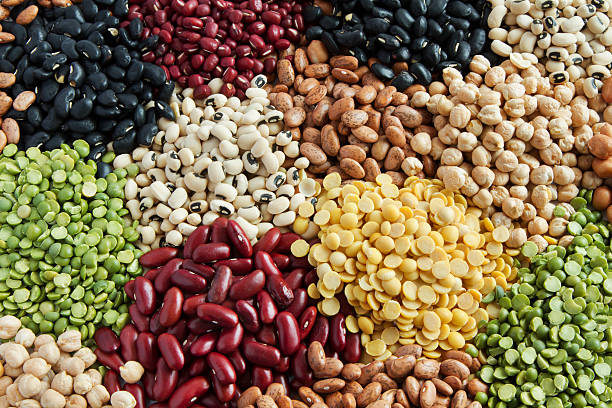US Foodservice market size was USD 815.62 billion in 2023 and the market is projected to touch USD 1,748.28 billion by 2032, at a CAGR of 8.84% during the forecast period. Foodservice includes a wide range of establishments such as restaurants, cafes, bars, fast food outlets, cafeterias, and catering services. The market serves millions of people daily and plays a crucial role in the economy by providing employment and driving consumer spending.
In recent years, the US foodservice sector has expanded significantly, owing to shifting consumer preferences, technological developments, and increased urbanization. Consumers are increasingly seeking convenience, which has resulted in a surge in quick-service restaurants and meal delivery services. Health-consciousness has also influenced the industry, with a greater desire for nutritional and organic food products. To fulfil consumer expectations, the sector has quickly adopted online ordering systems, mobile apps, and healthier menu options. Furthermore, the COVID-19 pandemic has hastened the use of contactless delivery and takeaway services, changing the foodservice environment. As the industry evolves, firms focus on sustainability, decreasing food waste, and enhancing supply chain efficiencies to fulfil regulatory obligations and consumer needs.

US Foodservice report scope and segmentation.
US Foodservice dynamics
One of the primary causes is rising desire for convenience, which has resulted in a spike in quick-service restaurants and meal delivery services. Consumers, particularly younger generations, value rapidity and simplicity of access to meals, leading in the rise of online ordering platforms and smartphone apps. This shift has been expedited by the COVID-19 pandemic, which has forced numerous businesses to implement contactless delivery and takeaway options.
Health and wellness trends have a big impact on market dynamics. Consumers are increasingly interested in nutritional, organic, and plant-based cuisine, leading foodservice operators to vary their menus and offer healthier options. Additionally, technical improvements play an important part in influencing the market. AI-powered kitchen equipment, automated ordering systems, and data analytics for individualized consumer experiences are becoming more common.
Sustainability and environmental concerns are another critical aspect driving changes in the foodservice market. Businesses are focusing on reducing food waste, sourcing sustainable ingredients, and implementing eco-friendly practices to meet regulatory requirements and cater to the eco-conscious consumer base. Moreover, labor challenges, including staffing shortages and the need for higher wages, influence operational strategies and cost management in the industry.
Demand for Convenience
The demand for convenience is a major driver in the US foodservice business. Modern customers, particularly Millennials and Generation Z, lead hectic lives that demand rapid and easy access to food. This has resulted in a surge in quick-service restaurants (QSRs) and meal delivery services. The rise of smartphones and high-speed internet has accelerated this trend, allowing for easy online ordering via applications and websites. Companies such as Uber Eats, DoorDash, and Grubhub have capitalized on this demand by providing a diverse range of food options delivered directly to customers’ doors. This convenience component is not only restricted to fast food; even conventional full-service restaurants have responded by offering takeout and delivery alternatives to fulfil consumer expectations.
Health and Wellness Trends
Another key driver is the increased public interest in health and wellness. Consumers are increasingly seeking healthful, organic, and plant-based food options as they become more aware of the effects of their diet on their overall health. This trend has pushed foodservice operators to expand their menu offerings to include healthy options including salads, whole grains, and plant-based proteins. To attract health-conscious customers, restaurants and food chains are promoting the usage of fresh, locally produced ingredients. This movement is not merely a trend, but a long-term transformation in consumer behaviour, driven by a more aware public that prioritizes sustainable and healthful eating habits.
- Restraints:
Labor Challenges
Labor challenges are a significant restraint in the US foodservice market. The industry has been grappling with a shortage of skilled workers, which has been exacerbated by the COVID-19 pandemic. Many workers left the foodservice sector during the pandemic, and attracting them back has proven difficult. Additionally, there is increasing pressure to raise wages and improve working conditions to attract and retain staff. This has led to higher operational costs for foodservice providers, impacting their profitability. The high turnover rate in the industry also contributes to ongoing recruitment and training costs, further straining resources.
Regulatory Compliance
Regulatory compliance is another significant concern for the foodservice industry. Food safety rules, health codes, and labor restrictions require continuous monitoring and adaption. For example, implementing new health and safety regulations during the COVID-19 pandemic required considerable operational adjustments as well as investments in protective equipment and sanitary measures. Furthermore, increased regulatory focus on sustainability practices, such as eliminating single-use plastics and minimizing food waste, requires continuing compliance activities and may result in additional expenditures. Failure to comply with these regulations can result in fines, legal troubles, and damage to a company’s reputation.
- Opportunities:
Technological Advancements
Technological improvements create major opportunities for expansion and innovation in the foodservice industry. The combination of artificial intelligence (AI) and machine learning can improve a variety of corporate processes, from inventory management to customer service. AI-powered kitchen equipment can improve productivity and uniformity in food preparation, while data analytics can provide insights into consumer tastes, allowing for personalized marketing and menu options. Furthermore, automation of ordering and payment processes, such as self-service kiosks and mobile payment alternatives, can improve the customer experience and expedite operations. Investing in technology can also help organizations adjust to workforce shortages, minimizing the need for human intervention in repetitive processes.
- Segment Overview
The foodservice market is divided into four types: cafes and bars, cloud kitchens, full-service restaurants, and quick-service restaurants. Cafes and bars provide a casual eating experience cantered on beverages including coffee, tea, and alcoholic beverages, which are frequently complemented by light nibbles or desserts. These places are known for their laid-back atmosphere and social appeal. Cloud kitchens, often known as ghost kitchens, operate without a traditional dine-in area, instead focused on meal delivery and takeaway. This concept has gained popularity due to increased demand for meal delivery services and reduced operational expenses than traditional eateries. Full-service restaurants offer a comprehensive dining experience, including table service, a diverse menu, and a focus on ambiance and customer service. They cater to diners seeking a leisurely meal and are often chosen for special occasions. Quick-service restaurants (QSRs), on the other hand, emphasize speed and convenience, offering fast food that is often less expensive and requires minimal waiting time. QSRs are designed for customers who are looking for a quick meal option, often in high-traffic areas.
The foodservice market is divided into two types of outlets: chained and independent. Chained outlets are part of larger national or worldwide businesses with several locations, ensuring uniformity in food, service, and experience across all branches. These locations benefit from high brand recognition, economies of scale in purchasing and marketing, and consistent operations. They cater to customers seeking consistent and predictable dining experiences. Independent outlets, on the other hand, are individual establishments or small clusters of sites that are frequently owned by the same person. These establishments serve distinct and diverse cuisines, which frequently reflect local tastes and innovative culinary methods. Independent stores can give a more personalized and distinct dining experience, appealing to consumers looking for diversity and originality in their culinary selections. They often play a critical role in the local economy and can adapt more quickly to changing consumer trends and preferences.
US Foodservice market competitive landscape
Chain restaurants like McDonald’s, Starbucks, and Chipotle dominate the industry because of their widespread reach, great brand awareness, and consistent customer service. To sustain their competitive advantage, these behemoths use economies of scale, cutting-edge technology, and aggressive marketing tactics. To attract and retain customers, they constantly innovate by introducing new menu items, loyalty programs, and improved delivery alternatives. Their capacity to quickly react to market trends, such as the increased demand for healthy and sustainable food options, is also a critical factor in their market domination.
Independent restaurants and smaller chains, on the other hand, provide distinct and diverse culinary experiences that appeal to customers looking for authenticity and creativity. These players compete by emphasizing high-quality ingredients, customized service, and offering a unique dining experience. They frequently serve specialized markets, catering to specific dietary needs or regional tastes. The development of food trucks and pop-up restaurants has also given dynamism to the competitive scene, allowing small enterprises to enter the market with lower overhead costs and novel ideas.
Businesses are investing in AI, data analytics, and mobile apps to improve operational efficiency and customer engagement. The COVID-19 pandemic accelerated the adoption of online ordering and delivery services, leading to partnerships with platforms like Uber Eats and DoorDash. Sustainability practices are becoming increasingly important, with companies striving to reduce their environmental footprint to attract eco-conscious consumers.
US Foodservice Recent Developments
- In May 2024, Unilever Food Solutions (UFS) has released its Future Menus Top North America Trends 2024 report, highlighting key menu trends expected to shape the restaurant industry in the near future.
Scope of US Foodservice report
US Foodservice report segmentation
In case you don’t find what, you are looking for, please get in touch with our custom research team at
Latest Report
Contact Us
+91 9319642100
sales@organicmarketresearch.com
Noida One Tower Sec 62 Noida 201301
Website: https://organicmarketresearch.com













